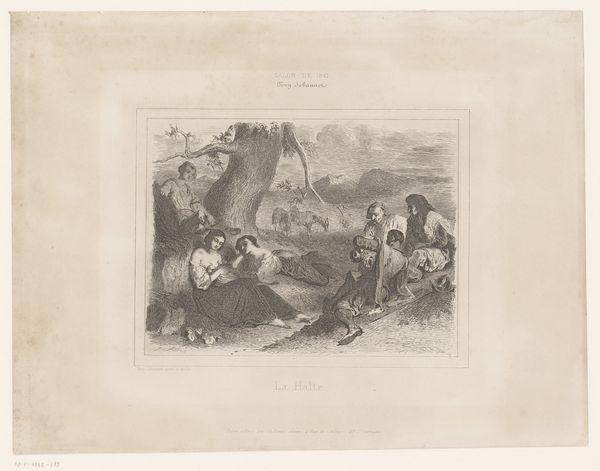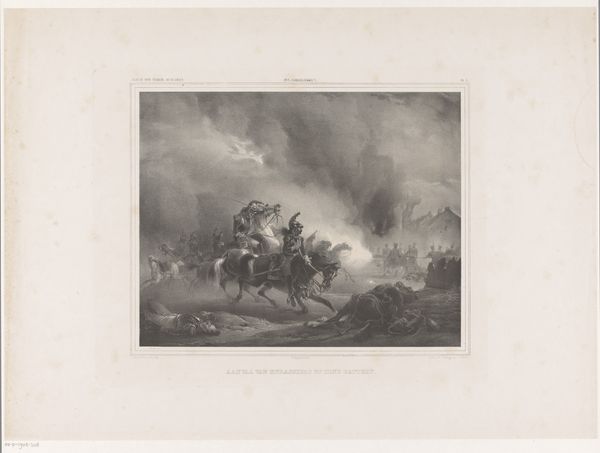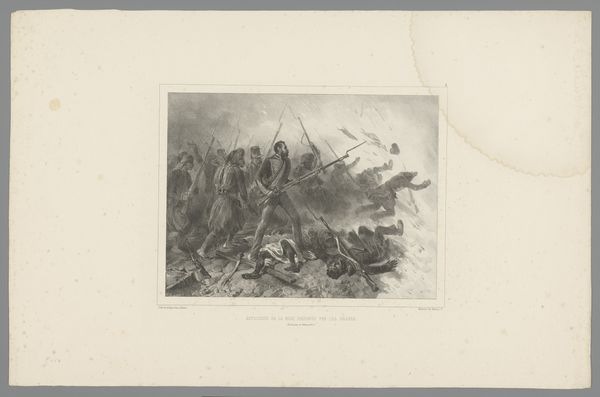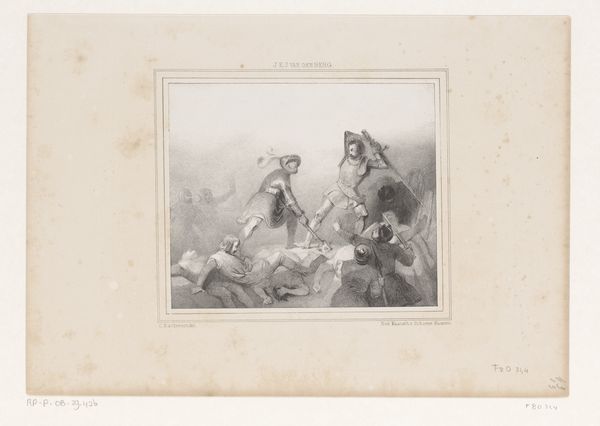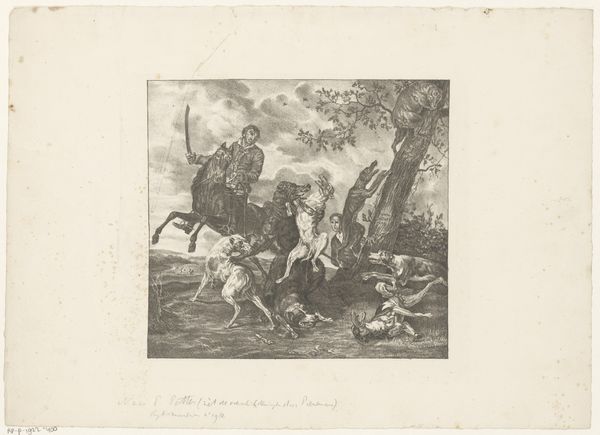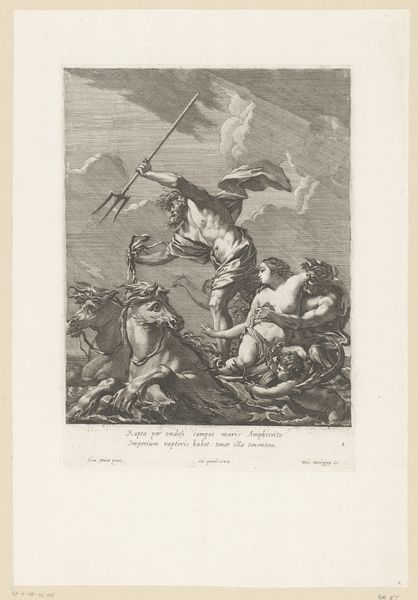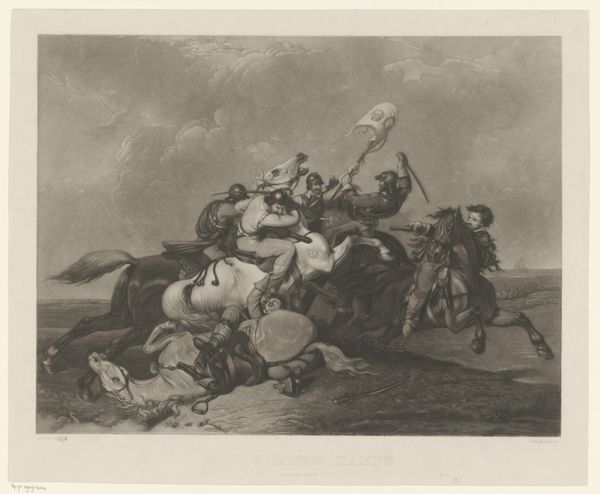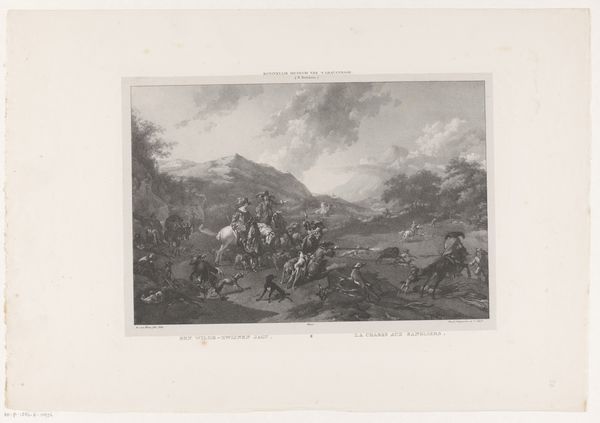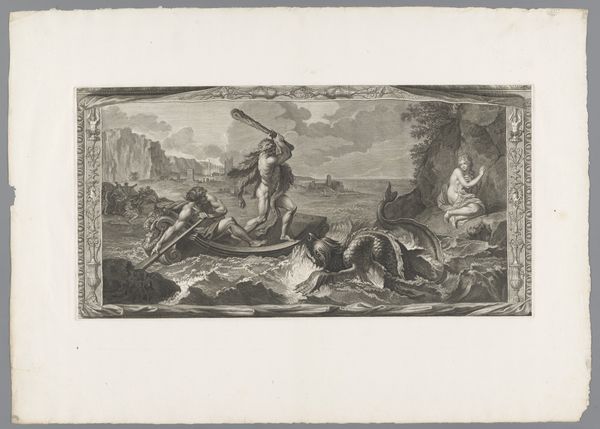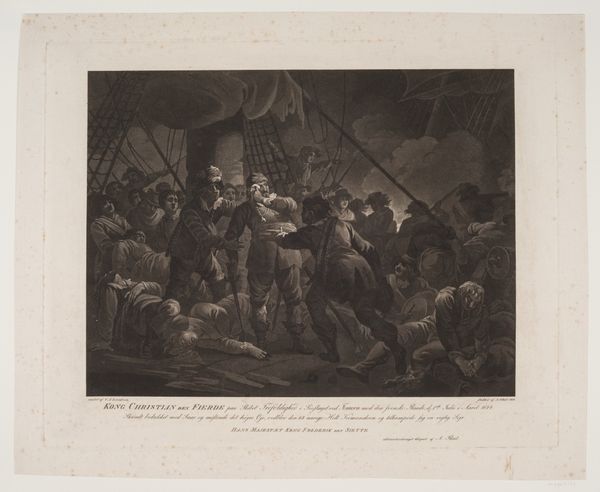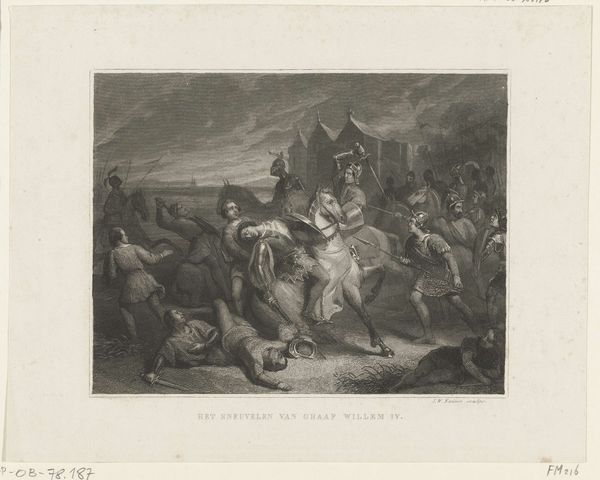
print, engraving
# print
#
landscape
#
figuration
#
romanticism
#
history-painting
#
engraving
Dimensions: height 287 mm, width 322 mm
Copyright: Rijks Museum: Open Domain
Curator: Looking at this print, titled "Peter the Great on Lake Ladoga," made by Adrien Migneret in 1829, what strikes you most? The turbulent scene definitely captures my attention. Editor: Immediately, it’s the expressions – that terror! The stark visual symbolism suggests themes of vulnerability, chaos, and potentially, power challenged by nature. But who are the people surrounding Peter the Great in the boat? Curator: We need to delve into its context. Russia at the time was navigating its relationship with a changing Europe. The figure of Peter was often strategically deployed, particularly in art and literature, to explore national identity, cultural exchange, and power. Editor: Absolutely. Consider the light and darkness. It suggests a moral struggle or perhaps a commentary on leadership during times of immense upheaval. The viewer's eye is naturally drawn to the individuals gripped by fear, but there is this powerful symbol of monarchy overlooking it all in Peter the Great himself. Curator: But his steely gaze could be read as an attempt to create the strong national leader in contrast to the fear. And look at the women beside him; do we know anything of their representation within his vision for a more ‘modernized’ Russia, how they benefit from the Russian modernization projects or even feel excluded by them? It can really begin to complicate ideas of modernity in that cultural moment, through the use of representation of those groups within society at that moment in time. Editor: A fair point. By centering his commanding presence amid the chaos, the artwork may have inadvertently critiqued unchecked ambition or the illusion of control during a time of natural or even political storms. Curator: It definitely creates a historical and intersectional dialogue of society that even goes beyond Russia in this time period, and how it mirrors so many things going on today! Editor: Absolutely. It provokes deeper questions about humanity’s relationship with the environment, power, and mortality, while layering historical context within that experience. It remains deeply fascinating to observe.
Comments
No comments
Be the first to comment and join the conversation on the ultimate creative platform.
